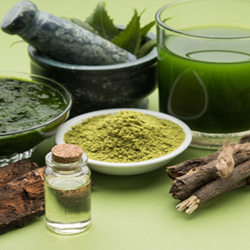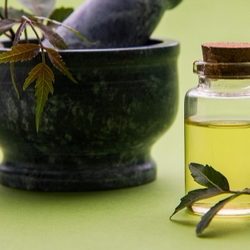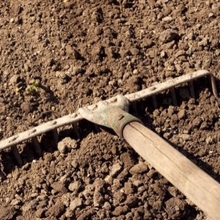(Editor's Note: This article was originally published on April 12, 2008. Your comments are welcome, but please be aware that authors of previously published articles may not be able to promptly respond to new questions or comments.)
When my husband came home from work the other day the first words out of his mouth were, "what is that gawd-awful smell?"
Just that morning I had discovered the dreaded mealy bug on my prized braided hibiscus tree. They had to go. Mealy bugs are the bane of the indoor gardener, the sight of just one of those white blobs can cause panic. I had to spray!! It isn't my fault it's winter and it can't be done outside. That is the only drawback to Neem oil: the smell, a combination of well-rotted onions and sulphur. Even though I had sprayed them in the bathroom and left them there behind closed doors, the smell permeated the entire first floor of the house. The critters were slinking around with their noses held high and their eyes all squinty.
But the stuff works.
 Azadirachta indica. This native of India and Pakistan has been used for medicinal purposes for centuries. Highly heat and drought tolerant, the Neem tree is often planted along roads and in backyards as a dependable source of shade.
Azadirachta indica. This native of India and Pakistan has been used for medicinal purposes for centuries. Highly heat and drought tolerant, the Neem tree is often planted along roads and in backyards as a dependable source of shade.
The new shoots and flowers are eaten as a vegetable in India and Neem twigs were one of the first tooth brushes. Almost every part of the Neem tree is used for medicinal purposes in India. It is known as "the village pharmacy," "heal all" and "nature's drugstore."
The beauty of Neem is that it doesn't kill the bugs; it alters them so they can no longer breed or feed. It also prevents eggs from hatching. In short, my mealy bugs will starve to death. So would any other plant-sucking insects, such as aphids, cabbage worms and Japanese beetles. That's right folks, a Japanese beetle might munch a Neem-covered lily leaf, but her eggs will not hatch, if she is even capable of laying them in the first place.
place.
It is safe to use around pets and children and it is harmless to any insects that feed on nectar such as butterflies and honey bees. It is also harmless to ladybugs. It will not harm any creatures that feed on the Neem-infected bugs.
It is expensive. The oil is produced from the seeds. I paid $18 for 4 ounces. I mix it approximately 1 teaspoon to 1 quart of warm water with a few drops of plain dish soap. The dish soap helps the oil stick to the leaves. Spray liberally, I mean dripping wet, on the tops and undersides of the leaves. Spray the branches and the suface of the soil. Repeat the treatment every 5 to 7 days. After 4 applications, no more bugs.
Last summer I used it outside. I had to spray more often than the recommended every 5 to 7 days  since I picked the rainiest week of the summer to do it. I also learned the hard way that after spraying, avoid having the plants in full sun for a couple of days or their leaves will burn. I have used it on all of my house plants except for the furry leaved varieties such as African violets.
since I picked the rainiest week of the summer to do it. I also learned the hard way that after spraying, avoid having the plants in full sun for a couple of days or their leaves will burn. I have used it on all of my house plants except for the furry leaved varieties such as African violets.
The smell in the bathroom was strong for three days. It waned a bit after that, or else I just got used to it. I appreciate the fact that I can use it in the house without fearing for the safety of my critters. I also like the fact that it works. In this age of harsh chemicals and pesticides, it is comforting to know that their are alternatives. We just have to make the choice to use them.
For more information on the benefits, health and otherwise, of the Neem Tree.
Many thanks to Dinu, Gabrielle, and Chamma for their wonderful photo additions to PlantFiles.

















